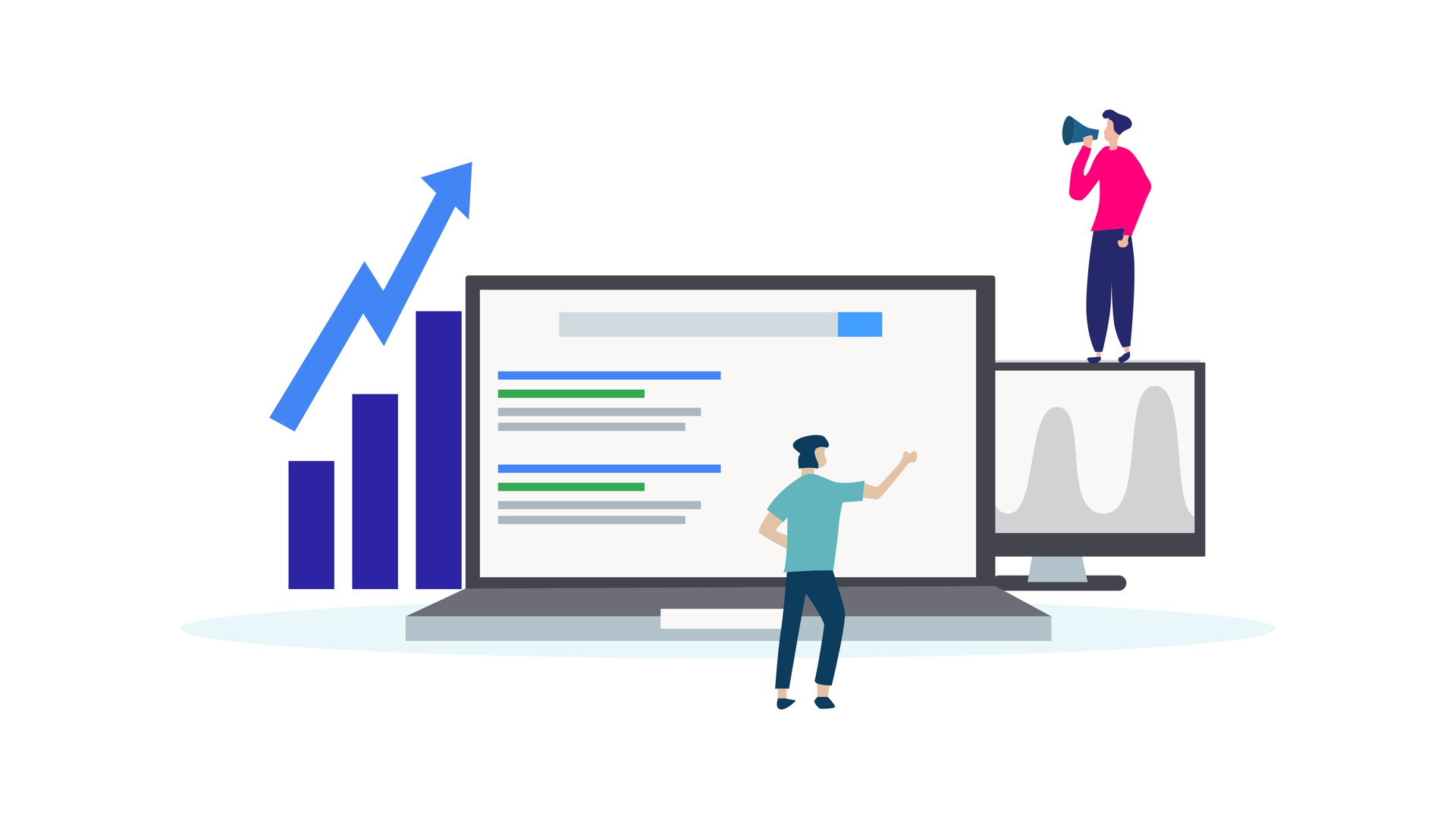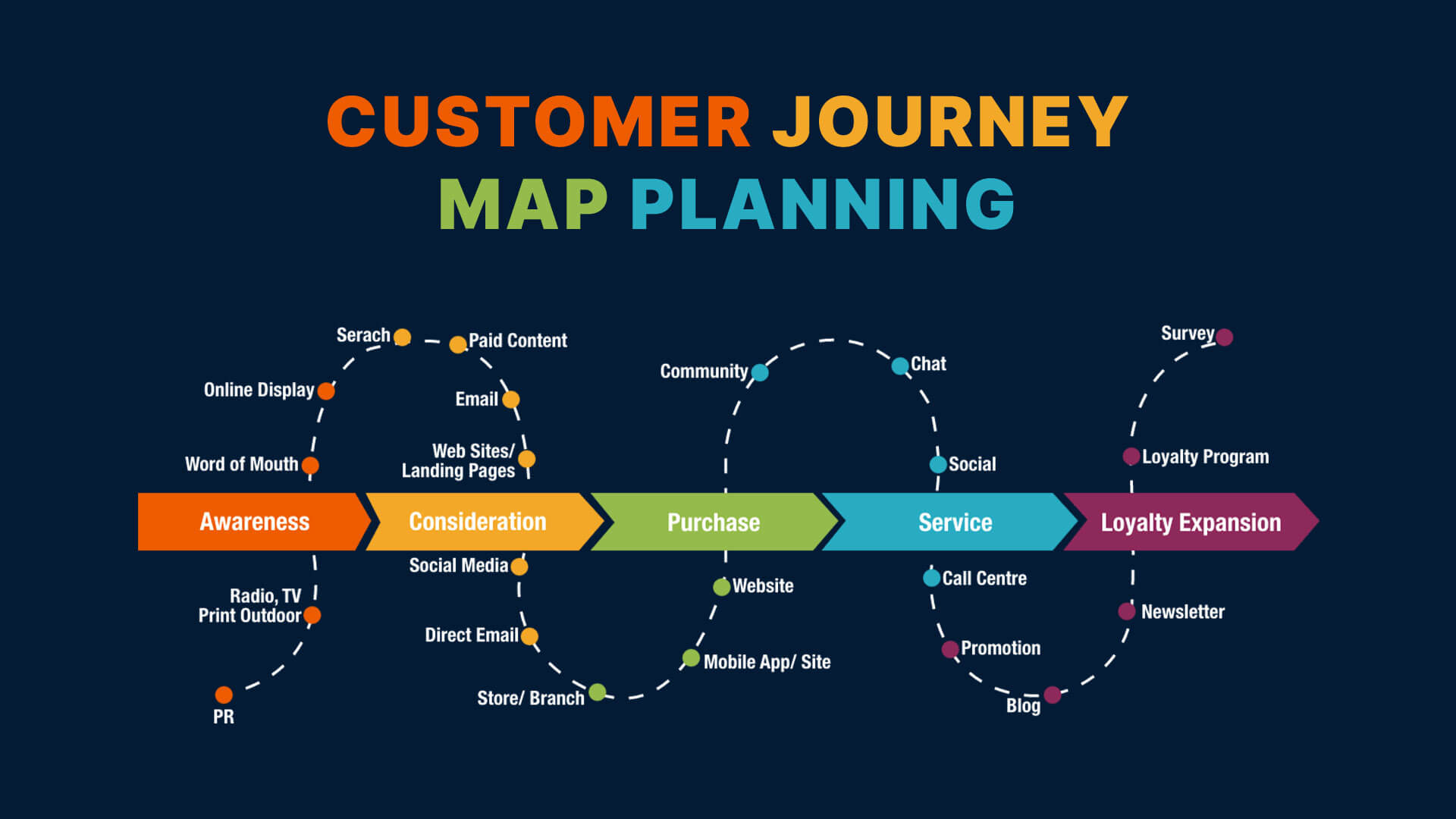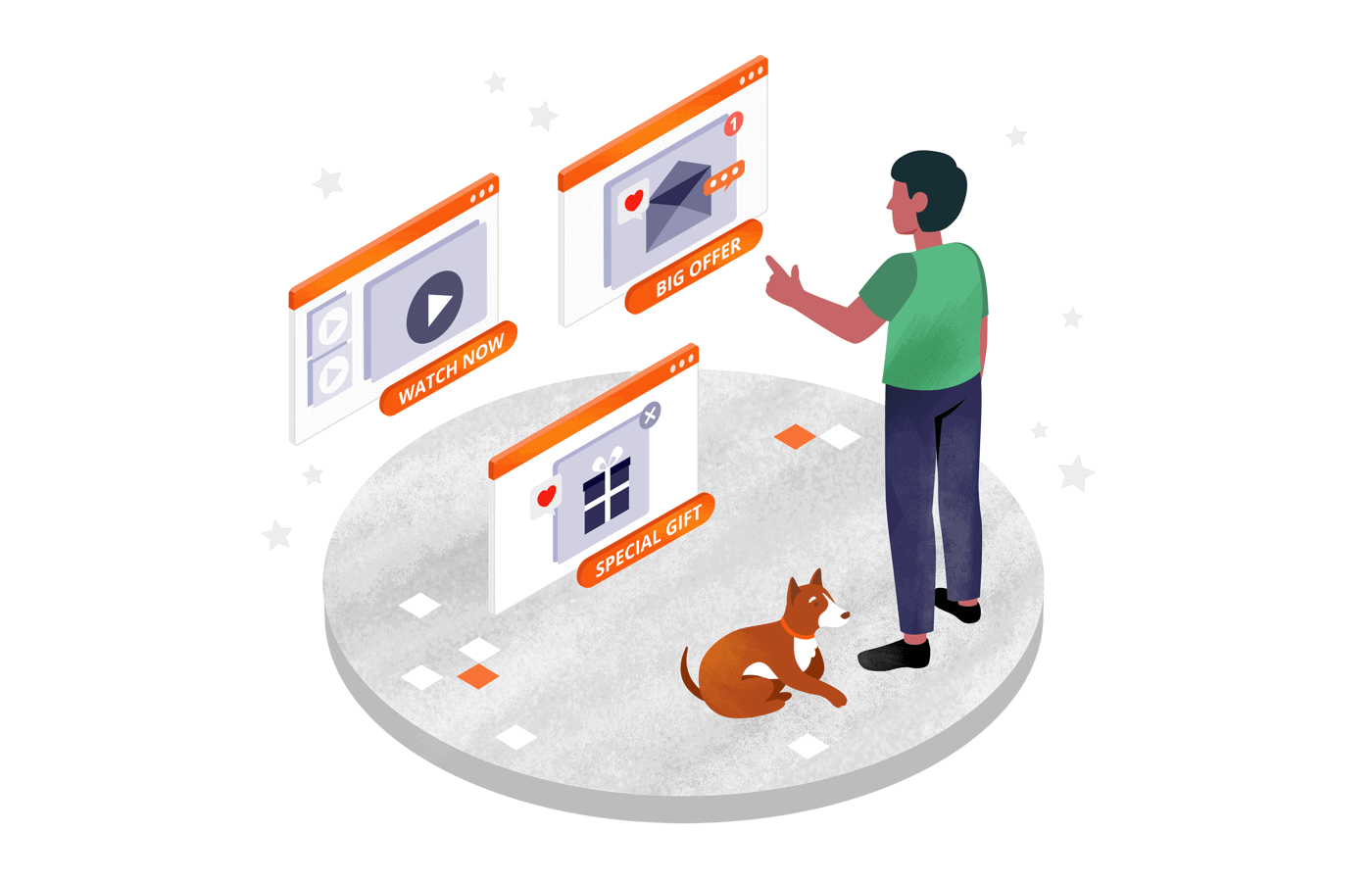10 min to read
How to Run Dynamic Campaigns Based on the Customer Journey?

Dynamic Campaigns Based on the Customer Journey
In the highly competitive business world, it is crucial to comprehend and cater to the customer journey to run successful marketing campaigns. The customer journey represents individuals' complete process when engaging with a brand, starting from the initial awareness stage and culminating in becoming a loyal customer. To optimize the effectiveness of marketing efforts, businesses must create dynamic campaigns specifically designed for each step of the customer journey.
CodeDesign is the leading digital marketing agency in Lisbon Portugal.
The Customer Journey: A Brief Overview

Customer Journey Map Planning
The customer journey refers to a customer's process when interacting with a brand or business. It encompasses all the touchpoints and experiences a customer has, from their initial awareness of the brand to their post-purchase interactions. The customer journey typically consists of several stages: awareness, consideration, decision, and post-purchase. During each stage, customers have different needs, motivations, and expectations, and businesses need to understand and cater to these aspects to provide a seamless and satisfactory customer experience. Mapping and analyzing the customer journey helps companies to gain insights into customer behavior, preferences, and pain points, enabling them to develop targeted marketing strategies and improve overall customer satisfaction.
Stage 1: Awareness
The first stage of the customer journey is focused on creating brand awareness and generating interest in potential customers. The primary objectives during this stage are to increase brand visibility and capture the target audience's attention. The marketing campaigns suitable for this stage are:
a. Social media ads: By using targeted social media advertising, businesses can reach relevant audiences and raise awareness about their brand. This can be achieved by identifying specific demographics, interests, or behaviors to ensure that the ads are shown to the right people.
b. Influencer marketing collaborations: Collaborating with influential individuals in the industry or niche can help businesses reach new audiences. By partnering with influencers, brands can leverage their existing following to create buzz around their products or services.
c. Content marketing strategies: Creating informative and engaging content is crucial for capturing the interest of potential customers. This can include blog posts, videos, infographics, or any other content format that educates and engages the target audience. By providing valuable information, brands can position themselves as thought leaders and establish credibility. Read this complete guide on digital marketing funnel and then choose the right digital marketing channel for your business.
Stage 2: Consideration
The consideration stage focuses on nurturing leads and positioning the brand as a viable solution in the minds of potential customers. The objective is to maintain engagement and build trust as customers evaluate their options. The marketing campaigns suitable for this stage are:
a. Email marketing campaigns: Implementing personalized email campaigns allows businesses to deliver tailored content and product recommendations to potential customers. Companies can provide relevant information that addresses their needs and interests by segmenting the audience based on their preferences, behaviors, or previous interactions.
b. Retargeting ads: Retargeting ads help keep the brand top of mind for potential customers who have shown interest but have yet to purchase. These ads appear on various platforms and remind customers to revisit the brand's offerings.
c. Case studies and customer testimonials: Providing case studies and customer testimonials can help establish credibility and trust. By showcasing real-life success stories and positive experiences, brands can demonstrate the value and benefits of their products or services, giving potential customers the confidence to consider them a solution.
Stage 3: Decision
The decision stage is when potential customers are ready to purchase. The primary objective during this stage is to convert leads into paying customers. The marketing strategies suitable for this stage are:
a. Limited-time offers and discounts: Creating a sense of urgency through limited-time offers and discounts can incentivize potential customers to purchase. By offering exclusive deals or time-limited promotions, brands can tap into the fear of missing out and encourage customers to take action.
b. Product demonstrations and trials: Providing opportunities for potential customers to experience the product or service firsthand can significantly influence their decision-making process. Whether through free trials, product demonstrations, or samples, allowing customers to see the value and functionality of the offering can significantly increase their likelihood of converting.
c. Customer reviews and ratings: Utilizing customer reviews and ratings can be a powerful tool for reassuring potential customers and alleviating doubts or concerns. Positive reviews and high ratings act as social proof, validating and building trust in the brand and its offerings. Check these Amazon FBA tips to grow your business and see how optimising your Amazon listing could help you grow.
Stage 4: Post-Purchase
The post-purchase stage focuses on fostering customer loyalty and driving repeat purchases. The objective is to provide an exceptional experience that encourages customers to remain engaged with the brand. The marketing campaigns suitable for this stage are:
a. Personalized email campaigns: After a customer makes a purchase, personalized email campaigns can cross-sell complementary products or services based on their previous purchases or preferences. By tailoring recommendations to individual customers, brands can increase the chances of repeat purchases.
b. Loyalty programs: Implementing loyalty programs can be an effective way to reward and retain customers. By offering exclusive benefits, discounts, or rewards for continued support, brands can build loyalty and encourage customers to remain engaged with the brand.
c. Customer surveys and feedback loops: Gathering customer insights and feedback is crucial for identifying areas of improvement and enhancing the overall customer experience. Businesses can collect valuable information to drive strategic decisions and continuous improvement by implementing customer surveys and feedback loops.
Implementing Dynamic Campaigns for Each Stage

marketing campaigns
Leveraging Data and Analytics
Businesses need to leverage customer data and analytics tools to cater to customers at different stages of the journey effectively. By analyzing customer behavior, preferences, and engagement patterns, brands can gain insights to deliver targeted and relevant campaigns.
Segmenting customers based on their journey stage allows businesses to tailor their messaging and offers to align with customers' specific needs and interests. This segmentation can be found on various criteria, such as previous interactions, purchase history, or engagement levels. Read this guide on E-commerce supply chain and voice search optimization.
Marketing Automation
Implementing marketing automation platforms can streamline campaign execution and personalization. These platforms enable businesses to set up triggers and workflows that deliver timely and tailored messages based on customer actions or predefined conditions. This ensures that customers receive the right messages at the right time, enhancing their overall experience and increasing the chances of conversion.
Content Personalization
Developing personalized content is critical to engaging customers at each journey stage. By leveraging customer data, brands can deliver targeted content through various channels like email, website, and social media. Personalization can involve customizing content based on customers' preferences, demographics, or past behaviors, ensuring they receive relevant information that resonates with their needs.
Omnichannel Marketing
Providing a seamless customer experience across multiple channels and touchpoints is crucial for effective dynamic campaigns. Brands must ensure consistent messaging, design, and user experience across various platforms, including social media, email, website, and offline channels. This allows customers to interact with the brand effortlessly, regardless of their preferred channel and enhances overall brand perception.
The Power of Testing and Optimization
A/B testing involves comparing different campaign elements to determine the most effective variations. By testing different versions of headlines, images, calls-to-action, and landing pages, businesses can optimize their campaigns to improve conversion rates. Through iterative testing, brands can continuously refine their messaging and creativity to maximize campaign performance.
Regularly analyzing campaign performance is essential for making data-driven adjustments and optimizing results. By monitoring key performance indicators (KPIs) such as click-through rates, conversion rates, and customer engagement metrics, brands can identify areas of improvement and make data-driven decisions. This iterative optimization process ensures that campaigns are continuously refined for better results.
Conclusion
Businesses need to understand and cater to customers at each stage to run dynamic campaigns based on the customer journey effectively. Companies can maximize marketing effectiveness and drive customer engagement by implementing targeted campaigns for awareness, consideration, decision, and post-purchase. Leveraging data and analytics, marketing automation, content personalization, and omnichannel marketing are crucial for delivering relevant and timely messages. Through testing, optimization, and learning from real-life case studies, businesses can refine their campaigns and continuously improve their marketing efforts in line with the customer journey.
FAQS - Frequently Asked Questions
What is a customer journey, and why is it important for marketing campaigns?
The customer journey encompasses the complete series of interactions a customer has with a brand, from initial awareness through post-purchase experiences. This journey is crucial for marketing campaigns because it helps marketers understand the varying needs, questions, and concerns of potential customers at each stage. By mapping out this journey, marketers can create more targeted, relevant, and personalized marketing strategies that significantly enhance the effectiveness of their campaigns. For instance, clients at Codedesign have seen remarkable improvements in conversion rates and customer retention by aligning their marketing strategies with the customer journey, leveraging insights gained from data analytics to tailor their approach at each stage.
How can I identify the different stages of my customers' journey?
Identifying the stages of your customers' journey involves understanding the steps a customer goes through when considering, purchasing, and engaging with your product or service. These stages typically include awareness, consideration, decision, and post-purchase. To accurately map these stages, you should analyze customer interactions and feedback across all touchpoints, including social media, customer service channels, and website analytics. Advanced data analytics tools can also provide deep insights into customer behavior and preferences, helping to define each stage more clearly. By examining patterns in the data, businesses can uncover the specific actions customers take and the motivations behind them, leading to a more accurate and insightful customer journey map.
What types of marketing campaigns are effective at the awareness stage?
At the awareness stage, marketing campaigns should aim to capture the attention of potential customers and introduce them to the brand or product. Effective campaigns at this stage include content marketing, such as informative blog posts or engaging videos, social media campaigns that leverage eye-catching visuals and hashtags to increase reach, and pay-per-click (PPC) advertising to drive traffic. For example, utilizing programmatic media buying can allow for precise targeting and real-time adjustments to campaign parameters, ensuring that awareness-stage content reaches the most relevant audience. Codedesign's experience has shown that integrating SEO strategies with content marketing significantly amplifies a brand's visibility, attracting a wider yet targeted audience efficiently.
How can I use email marketing effectively during the consideration stage?
Email marketing can be highly effective during the consideration stage by providing personalized and value-driven content to potential customers. To do this, segment your email list based on user behavior and interests, and tailor your emails to address the specific needs and concerns of each segment. Include detailed product information, customer testimonials, and comparison guides that help clarify the value proposition of your product or service. Additionally, using automation tools to trigger emails based on specific actions, such as visiting a product page or downloading a resource, can keep your brand top of mind and gently nudge potential customers further along their journey.
What strategies can help convert leads into customers at the decision stage?
To convert leads into customers at the decision stage, focus on strategies that alleviate their final concerns and highlight the unique benefits of your product or service. Implementing targeted remarketing campaigns can remind them of the products they viewed and offer incentives, like limited-time discounts or free shipping, to encourage a purchase. Personalized email campaigns that feature exclusive offers or the inclusion of social proof, such as customer reviews and case studies, can also be persuasive. Additionally, ensuring a seamless and frictionless checkout process is critical to preventing cart abandonment. Codedesign has successfully leveraged these strategies to boost conversion rates for clients, demonstrating the effectiveness of a targeted, customer-centric approach.
How can I foster customer loyalty in the post-purchase stage?
Fostering customer loyalty in the post-purchase stage involves continuing to engage with customers in a meaningful way. Follow-up emails thanking them for their purchase, asking for feedback, or offering helpful tips on how to use the product can enhance customer satisfaction. Implementing a loyalty program that rewards repeat purchases or referrals can also encourage ongoing engagement. Personalized recommendations based on previous purchases can make customers feel valued and increase the likelihood of additional sales. For Codedesign's clients, focusing on delivering exceptional post-purchase customer service has proven to be a key factor in building a loyal customer base.
Can you explain how to use data and analytics to improve campaign targeting?
Using data and analytics to improve campaign targeting involves collecting and analyzing information about your audience to identify patterns, preferences, and behaviors. Tools like DSPs (Demand Side Platforms) and DMPs (Data Management Platforms) can aggregate and analyze data from various sources, including website interactions, social media engagement, and purchase history. This analysis can help create detailed customer profiles or segments, enabling marketers to tailor their campaigns more precisely. For instance, predictive analytics can forecast future buying behaviors, allowing for the anticipation of customer needs and the creation of highly targeted campaigns. By leveraging these insights, Codedesign has helped clients achieve higher engagement rates and a better ROI on their marketing efforts.
What is marketing automation, and how does it support dynamic campaigns?
Marketing automation refers to the use of software to automate marketing actions, such as emails, social media postings, and other website actions. It supports dynamic campaigns by enabling marketers to deliver personalized content to users based on their interactions with the brand. For example, automation can trigger specific emails or ads based on the pages a user visits on a website or their purchase history. This capability not only increases efficiency by reducing manual tasks but also enhances the relevance of marketing messages, leading to higher engagement rates and improved conversion rates. Codedesign has utilized marketing automation to create more adaptive and responsive marketing strategies for clients, significantly boosting campaign performance.
How does content personalization enhance customer engagement at each journey stage?
Content personalization enhances customer engagement by ensuring that the information presented to a user is relevant to their interests, needs, and stage in the customer journey. By leveraging data analytics, marketers can customize content for different segments, making it more engaging and effective. For instance, new visitors might see introductory content that builds brand awareness, while returning visitors might see more detailed product information or special offers. This tailored approach ensures that users encounter content that resonates with them, fostering a stronger connection with the brand. Codedesign's application of content personalization strategies across the customer journey has led to increased dwell times, higher conversion rates, and improved customer satisfaction for its clients.
What are the benefits of adopting an omnichannel approach to marketing campaigns?
Adopting an omnichannel approach to marketing campaigns offers several benefits, including improved customer experience, increased brand consistency, and higher engagement rates. By ensuring a seamless interaction across all channels, from social media to email to in-store experiences, brands can meet customers where they are and provide a cohesive journey. This approach allows for more effective data collection and analysis, enabling more precise targeting and personalization. The consistency in messaging reinforces brand identity and values, building trust and loyalty among customers. Codedesign's implementation of omnichannel strategies has demonstrated how such a comprehensive approach can significantly enhance overall campaign effectiveness, driving sales and fostering long-term customer relationships.

About Bruno GavinoBruno Gavino is the CEO and partner of Codedesign, a digital marketing agency with a strong international presence. Based in Lisbon, Portugal, with offices in Boston, Singapore, and Manchester (UK) Codedesign has been recognized as one of the top interactive agencies and eCommerce agencies. Awarded Top B2B Company in Europe and Top B2C company in retail, Codedesign aims to foster personal relationships with clients and create a positive work environment for its team. He emphasizes the need for digital agencies to focus on data optimization and performance to meet the increasingly results-driven demands of clients. His experience in digital marketing, combined with a unique background that includes engineering and data, contributes to his effective and multifaceted leadership style. |

About CodedesignCodedesign is a digital marketing agency with a strong multicultural and international presence, offering expert services in digital marketing. Our digital agency in Lisbon, Boston, and Manchester enables us to provide market-ready strategies that suit a wide range of clients across the globe (both B2B and B2C). We specialize in creating impactful online experiences, focusing on making your digital presence strong and efficient. Our approach is straightforward and effective, ensuring that every client receives a personalized service that truly meets their needs. Our digital agency is committed to using the latest data and technology to help your business stand out. Whether you're looking to increase your online visibility, connect better with your audience, get more leads, or grow your online sales. For more information, read our Digital Strategy Blog or to start your journey with us, please feel free to contact us. |
CodeDesign is leading:
- Digital Agency
- Digital Marketing Agency
- Digital Ecommerce Agency
- Amazon Marketing Agency



Add comment ×